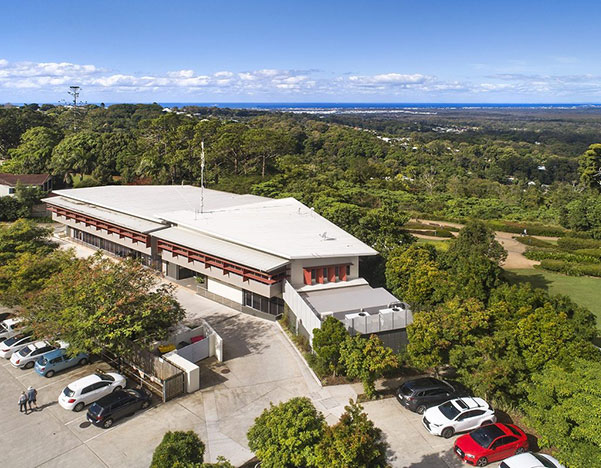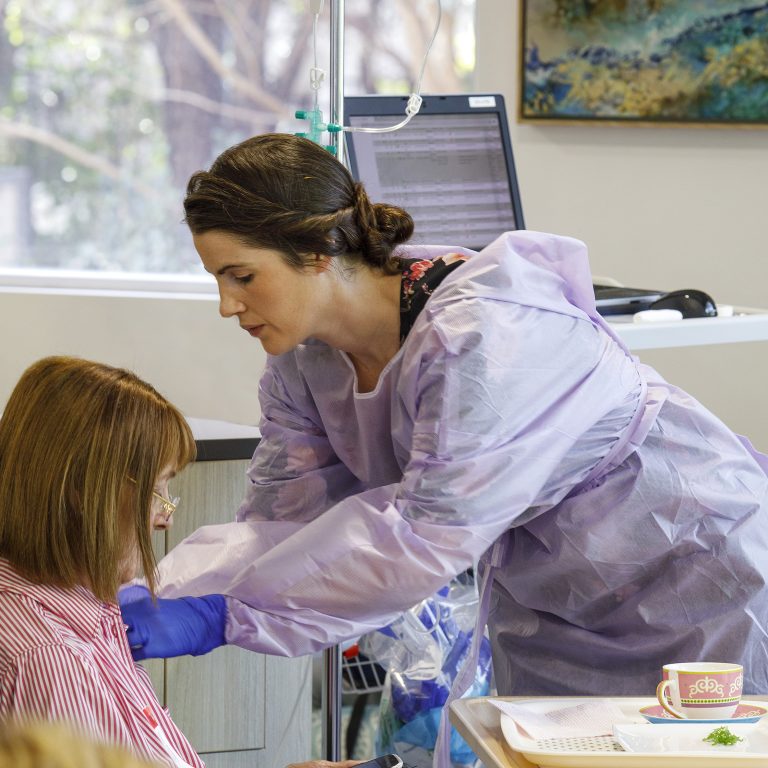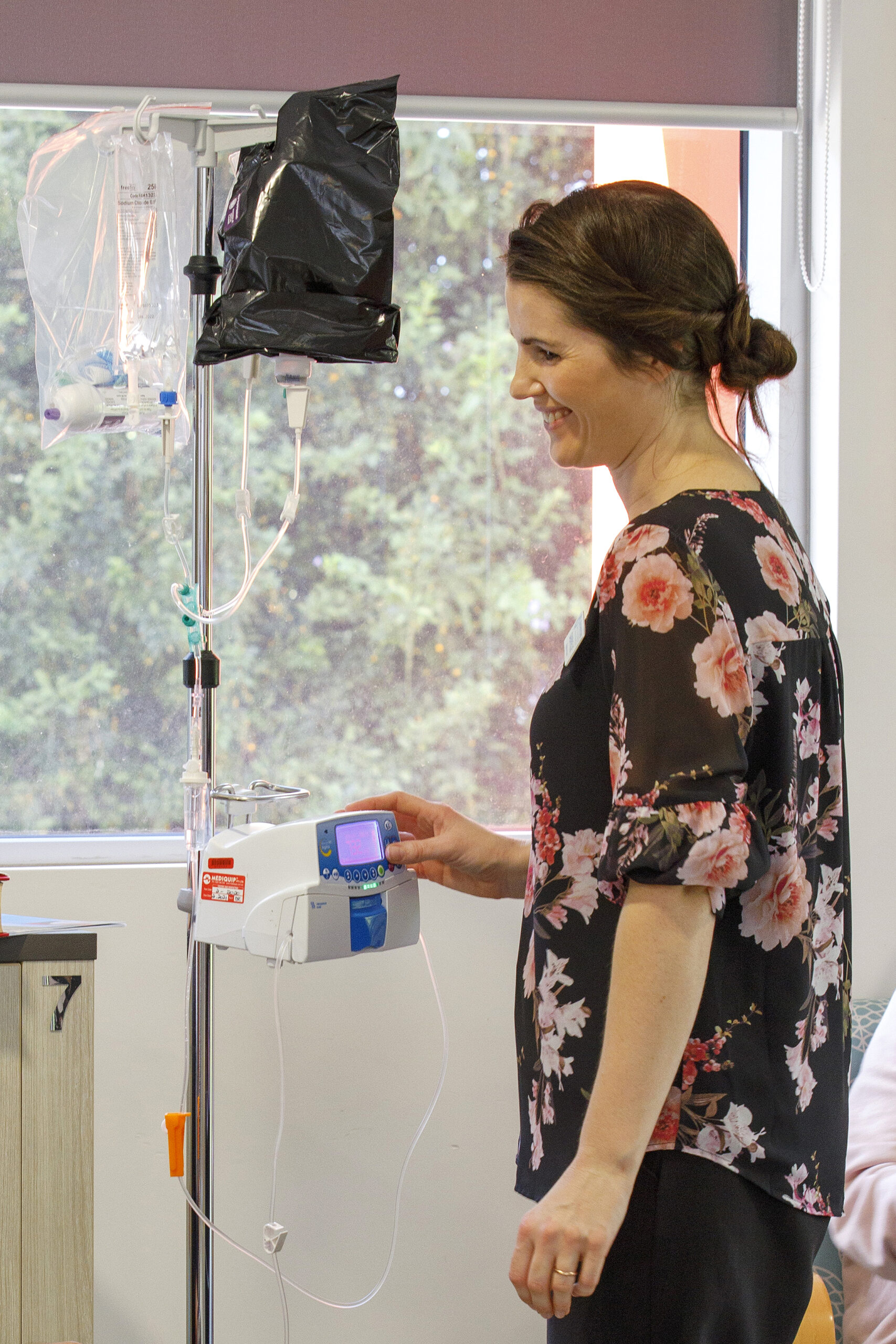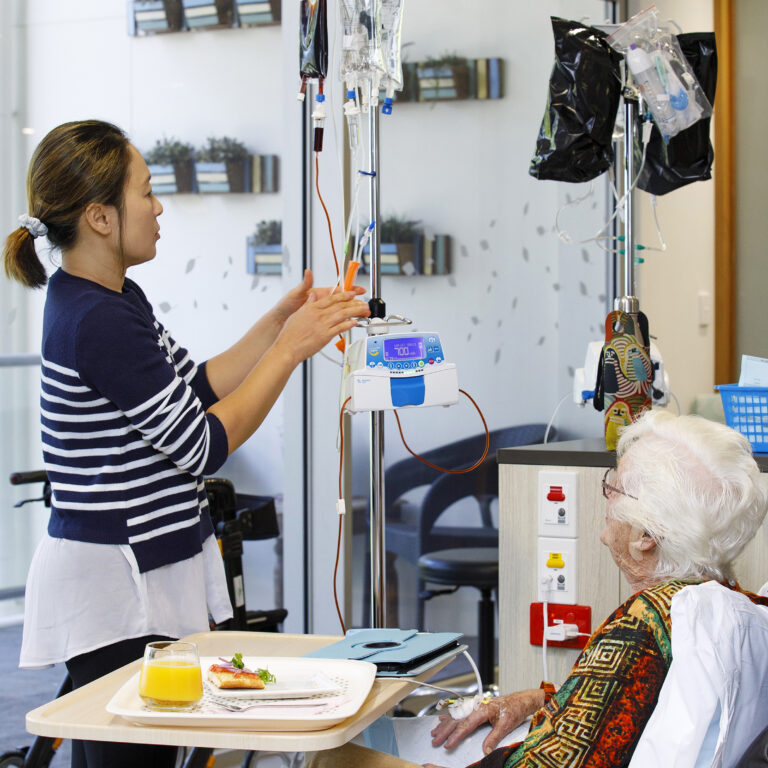Iron Infusions
The Sunshine Coast Haematology & Oncology Clinic offer iron infusions for patients who are experiencing low levels of iron or iron deficiency anaemia. We are a specialised infusion clinic dedicated to treating patients in a friendly and caring environment. Our clinic welcomes patients who have been recommended by their Doctor to have an iron infusion.
Our clinic is licensed with Queensland Health as a day-hospital and has current contracts with all major private health insurers and government departments. There are no out of pocket costs for patients with adequate hospital cover, with the exception of an excess or co-payment that may be payable. We also frequently treat non-insured patients and will happily provide you with a quotation on request.
A referral from your GP or Specialist is required prior to organising an iron infusion at our clinic. For further information or to book your iron infusion today, please contact us (07) 5479 0000.


What is an
Iron Infusion?
Iron is used to make haemoglobin, which is an important part of red blood cells as they help carry oxygen to our vital organs and tissues. When the amount of iron in the body gets too low, the haemoglobin levels fall below normal. This is known as ‘iron deficiency anaemia’.
If iron levels are low, it can negatively impact your mental function, muscle strength and energy levels. You may feel more tired than usual, experience shortness of breath and even have difficulty performing basic, everyday activities.
An iron infusion can be given to restore these low levels of iron in your body. The procedure is given via intravenous infusion where an iron containing product is infused directly into your vein and into your blood circulation. This iron product circulates in your blood and is delivered to organs throughout your body that require iron for normal functioning.
When is an Iron Infusion
Recommended?
Taking oral iron supplements as a tablet or liquid, is the most common way to treat iron deficiency anaemia and is usually recommended first. However, some people with iron deficiency anaemia find these supplements don’t effectively restore their iron levels. The reasons for this ineffectiveness can include experiencing side effects such as stomach pain and constipation, not taking the supplements as prescribed or the gut simply not absorbing the iron supplement properly.
When oral iron supplements are not working as quickly as necessary or being tolerated by the body, iron infusions are prescribed for iron deficiency anaemia. Intravenous iron infusions can rapidly restore iron levels in your body to normal, allowing for the production of more haemoglobin so that red blood cells can carry oxygen to your body’s tissues.
Before prescribing an iron infusion, your doctor will consider your individual case and whether the benefits outweigh the potential side effects.
How is an
Iron Infusion Given?
Intravenous Infusion (IV) is a method of putting fluids into the body’s bloodstream through a vein. When you are given an infusion, a needle is placed into a vein (usually in the back of your hand or arm) and attached to a drip which delivers the iron containing medicine mixed with saline (a sterile saltwater solution). This fluid is slowly dripped (infused) into the vein and mixes with the blood in your body.


Preparing for an
Iron Infusion
There is no particular preparation required for an iron infusion, however we recommend:
- Drinking plenty of fluids (water) so finding a vein for the infusion is easier
- Having food in your stomach, as there is no need to fast
- Taking your regular medications
Iron Infusion
Side Effects
While iron infusions are generally given without significant issues, patients may still experience side effects due to the intravenous (IV) nature of the iron treatment. It is unusual to experience significant side effects from an iron infusion. Some patients may experience:
- A metallic taste in the mouth
- Dizziness
- Headache
- Nausea, vomiting or stomach pains
- Muscle or joint pain
- Shortness of breath
- Itchiness / rash
- Changes to blood pressure or pulse
- Irritation or swelling at injection site
- Low phosphate levels
Generally, when side effects occur, they are mild and settle down on their own. Sometimes, side effects such as headaches, muscle or joint pain are felt 24 – 48 hours following the infusion. These usually settle down by themselves over the following few days.
Skin staining (brown discolouration) may occur due to leakage of iron into the tissues around the needle insertion site. This is not common, but the stain can be long lasting or permanent.
Although very uncommon, some people may have a serious allergic reaction. In rare cases, this can be life threatening. You will be closely monitored and may be given corticosteroids / antihistamines to reduce your risk of this occurring.
How long does the
Iron Infusion Take?
Please allow approximately 1 hour for the procedure to take place. The iron infusion process takes around 30 minutes to complete however, an observation period is required immediately after the infusion to ensure you experience no adverse side effects.

Iron Infusion Enquiry Form
To enquire about an iron infusion treatment at Sunshine Coast Haematology & Oncology Clinic, please complete the form below or phone our experienced team on (07) 5479 0000 between 8am and 5pm Monday to Friday.
Iron Infusion Frequently Asked Questions (FAQs):
Iron infusions take place at our Sunshine Coast Haematology and Oncology Clinic at 10 King St, Buderim QLD 4556. Our clinic is renowned for its high standard in patient care and scenic surrounds for you to enjoy whilst undergoing treatment.
A referral from your GP or Specialist is required before booking an iron infusion at our clinic.
Often a single iron infusion treatment will restore iron levels adequately, although the treatment can be repeated if required. This will depend on the type of condition that is causing the iron deficiency in the first place. Your Doctor will advise if an additional infusion may be required.
Yes, you will be able to drive home afterwards.
Iron infusions can restore your iron levels immediately following the procedure; however, it may take around 2 to 6 weeks before you notice a difference in your body. While it is a gradual increase in overall improvement for everyone, for some people, the gains will be very noticeable and much sooner, while for others, it will be subtle and take longer.
Following infusion, you can return to your normal activities, such as exercise, driving and even work, as long as you feel up to it. Some people may feel a little tired following an iron infusion, but this should pass within a few days. If you are feeling unusual tiredness or have prolonged side effects in the weeks following your iron infusion, please contact our clinic or your referring Doctor.
© 2023 Sunshine Coast Haematology and Oncology Clinic.

